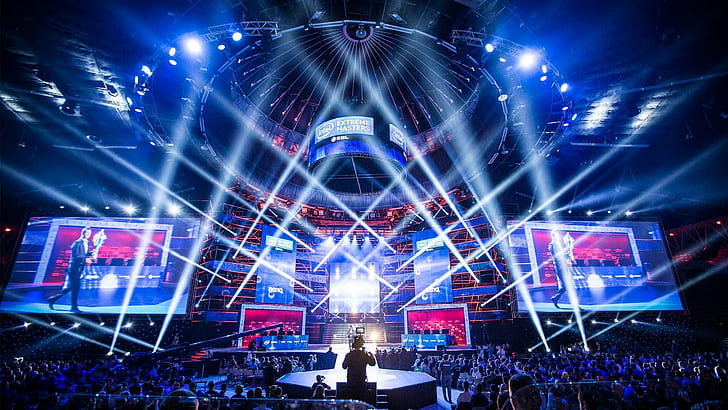Esports Betting’s Massive Surge Explained

The Phenomenal Rise of Esports Betting: Market Drivers, Technology, and Future Trajectory
The global gambling landscape is undergoing a dramatic transformation, and at the epicenter of this seismic shift is Esports betting. What began as a fringe activity among dedicated gaming enthusiasts has metastasized into a multi-billion dollar industry that is now a critical component of the mainstream sports betting ecosystem.
The title, “Esports Betting Market Explodes Now,” is not an exaggeration; it reflects a genuine, exponential growth driven by technological innovation, regulatory shifts, and a massive, digitally native fanbase. This comprehensive article delves into the forces powering this explosion, the market’s current size, the key players, the regulatory environment, and the ethical considerations that accompany such rapid expansion.
Understanding the Market’s Meteoric Growth
The Esports betting market is currently valued in the billions of dollars and is projected to maintain a compound annual growth rate (CAGR) well into the double digits for the foreseeable future. This remarkable surge is rooted in a unique blend of technological access and demographic shifts.
A. Key Demographic and Technological Tailwinds
The primary audience for Esports—and consequently, Esports betting—is the Millennial and Gen Z demographics. This group exhibits behaviors that are perfectly aligned with the growth of the market.
A. Digital Native Comfort: These generations are inherently comfortable with online transactions, digital currencies, and the use of mobile devices, making the transition to online betting seamless.
B. Existing Gaming Culture: The audience is already deeply immersed in the culture, language, and competitive structure of titles like Dota 2, League of Legends (LoL), Counter-Strike 2 (CS2), and Valorant. This understanding translates directly into informed betting.
C. Live Streaming Consumption: Platforms like Twitch and YouTube Gaming allow millions to consume live Esports content daily. This constant access to competition fuels the demand for live, in-play betting—a major revenue driver for bookmakers.
B. The Influence of Professionalization
The sport itself has matured from garage tournaments to global, highly professionalized leagues.
A. Structured Leagues and Events: The introduction of franchised leagues (like the League of Legends Championship Series – LCS) and multi-million dollar prize pools (like The International for Dota 2) has lent legitimacy and predictability to the competition.
B. Team and Player Recognition: Professional players and organizations have become global celebrities, driving fan loyalty and creating marketable narratives that drive betting interest, similar to traditional sports.
C. Mainstream Media Attention: Major media outlets and betting companies now regularly feature Esports odds and results, moving the market out of niche forums and onto mainstream platforms.
The Mechanics of the Esports Betting Ecosystem

The operational structure of the Esports betting market shares many similarities with traditional sports betting but has unique characteristics influenced by the fast-paced, digital nature of the competition.
A. Key Betting Markets and Products
Esports betting offers a diverse range of market types, appealing to both casual and expert bettors.
A. Match Winner (Moneyline): The simplest form, betting on which team will win the entire match.
B. Handicap Betting: Placing a virtual advantage or disadvantage on a team to balance out the odds, particularly common in games with clear favorites.
C. Total Maps/Rounds Over/Under: Betting on the total number of maps or rounds played in a match, often used in best-of-three or best-of-five formats.
D. Specific In-Game Events (Prop Bets): Unique to Esports, these bets focus on micro-events, such as “First Blood” (who gets the first kill in LoL/Dota 2), “First Turret Destroyed,” or “Player with the Highest Kill/Death/Assist (KDA) Ratio.” These fast-moving markets are crucial for in-play wagering.
B. The Technology Backbone: Data and API Integration
The rapid expansion would be impossible without sophisticated technology tailored to the unique data needs of Esports.
A. Real-Time Data Feeds: Bookmakers rely on high-speed, low-latency Application Programming Interfaces (APIs) to ingest real-time game data (score, kills, objectives) directly from the game servers. This is essential for setting and adjusting live odds accurately and instantly.
B. Odds Modeling: Esports odds models are more complex than traditional sports because game patches and updates can dramatically alter the balance of the game (e.g., a new character or weapon nerf/buff), requiring continuous algorithmic adjustments.
C. Mobile and App Dominance: The vast majority of wagers are placed via mobile apps, prioritizing speed, ease of use, and integration with live streaming platforms.
Regulatory Landscape and Market Geography
Regulation is the ultimate gatekeeper for market growth. Where jurisdictions have embraced regulation, the market has flourished.
A. Global Regulatory Patchwork
The regulatory approach to Esports betting varies significantly across the globe, creating distinct geographical market leaders.
A. Europe (The Pioneer): Nations like the UK, Malta, and Gibraltar were early adopters. They generally treat Esports the same as traditional sports for regulatory purposes, which has fostered a mature and competitive market.
B. Asia-Pacific (The Growth Engine): While some countries have strict anti-gambling laws, the region is home to the largest player base and viewership. Markets in Australia, South Korea (with strict local oversight), and emerging territories are major drivers of growth.
C. North America (The New Frontier): The US market is rapidly liberalizing post-PASPA (Professional and Amateur Sports Protection Act repeal). As states continue to legalize online sports betting, Esports is being included, unlocking a massive new pool of capital and bettors.
B. Integrity and Standardization Challenges
Regulators and operators face the unique challenge of maintaining competitive integrity in a decentralized, online environment.
A. Match-Fixing Concerns: The lower salaries for tier-two and tier-three players, combined with the ease of digital communication, pose risks of match-fixing. Regulators and third-party monitoring agencies (like ESIC – Esports Integrity Commission) are crucial for detecting and preventing fraud.
B. Transparency in Reporting: Unlike traditional sports where data is standardized, Esports data needs careful verification due to potential game client manipulation or latency issues.
The Intersection with Cryptocurrency and NFTs
The digitally native nature of Esports makes it a natural fit for integration with emerging blockchain and cryptocurrency technologies, adding another layer of complexity and growth potential to the betting market.
A. Decentralized Betting Platforms
The rise of decentralized autonomous organizations (DAOs) and decentralized finance (DeFi) is beginning to impact betting.
A. Crypto Wagering: Many specialized Esports betting platforms accept cryptocurrencies like Bitcoin and Ethereum, appealing to the tech-savvy audience and offering faster, more transparent transactions.
B. Peer-to-Peer Betting: Blockchain technology enables trustless, peer-to-peer betting without the need for a central bookmaker, potentially lowering transaction costs and increasing payout transparency.
B. Non-Fungible Tokens (NFTs) and Fan Engagement
NFTs, while primarily an asset class, are creating unique engagement models that indirectly fuel the betting ecosystem.
A. Tokenized Ownership: Teams are using NFTs to offer tokenized fan ownership or exclusive access, strengthening fan loyalty which translates into betting activity.
B. Skin and Item Betting (Grey Market): While regulated operators focus on fiat currency, a substantial “grey market” involves betting using in-game items or “skins.” This unregulated sector, while risky, illustrates the deep connection between gaming assets and wagering.
The Societal and Ethical Dimensions of Rapid Growth
With massive growth comes increased scrutiny regarding social responsibility, particularly surrounding underage gambling and addiction.
A. The Vulnerability of the Audience
The core Esports audience is younger than that of traditional sports, raising significant ethical concerns.
A. Underage Exposure: The line between watching a stream, playing a game, and being exposed to betting advertisements is very thin. Marketing directed at Esports fans requires careful self-regulation to prevent targeting minors.
B. Loot Boxes and Gambling Normalization: The prevalence of loot boxes and other random virtual item mechanics within video games can normalize gambling-like behavior, potentially serving as a gateway to formal betting for younger users.
B. Responsible Gaming Measures
Industry leaders and regulators must collaborate to implement stringent responsible gaming protocols.
A. Strict Age Verification: Utilizing advanced digital identity verification tools to ensure that only legally aged individuals can participate.
B. Self-Exclusion Tools: Providing robust, easy-to-access tools that allow users to set limits on deposits, losses, and time spent, or to self-exclude from all betting activity.
C. Educational Campaigns: Funding initiatives to educate the young, digitally literate audience about the risks associated with problem gambling.
VI. The Future Outlook: Consolidation and Innovation

The Esports betting market is moving into a phase of consolidation, innovation, and mainstream acceptance. The ‘explosion’ is not a one-time event but the beginning of a sustained, high-velocity transformation.
A. Convergence with Traditional Bookmakers
Major legacy sports betting operators (e.g., DraftKings, Bet365, FanDuel) are fully integrating Esports into their offerings, lending credibility and massive marketing power to the sector. This convergence will lead to:
A. Increased Liquidity: Larger betting pools and higher limits will attract more serious bettors.
B. Better User Experience: Investment in dedicated Esports betting interfaces will improve the overall user experience.
C. Sponsorship Deals: Expect more massive, multi-year sponsorship deals between betting companies and major Esports leagues and teams, further embedding betting into the viewing experience.
B. Evolution of In-Play Betting and Micro-Markets
Future innovation will center around making betting more immediate and integrated into the live stream.
A. AI-Powered Odds: Leveraging Artificial Intelligence (AI) to offer highly granular, ultra-fast odds on events that occur every few seconds in the game (e.g., “Will this player land a critical hit in the next 10 seconds?”).
B. Augmented Reality (AR) Integration: Potential for AR overlays on live streams that display personalized betting odds and stats, seamlessly blending content consumption and wagering.
Conclusion
In conclusion, the Esports betting market’s explosion is a confluence of a digitally savvy audience, the professionalization of competitive gaming, and the liberalization of global gambling laws. It is a market where technology is paramount, growth is inevitable, and responsible stewardship is non-negotiable. It is no longer a niche; it is a fundamental pillar of the future global betting industry.







